Arriving in Okinawa
Today we fly to Okinawa, the “Hawaii” of Japan!
We get up bright and early to say goodbye to Sakurajima from our hotel window. A layer of beautiful clouds veils and unveils the volcano, like the dance of the geisha.
We then try to hit the last footbath in Kyushu, at the airport! Alas, like everything else in Japan, it has hours. It opens at 9 am and we are too early. But here’s a picture. They re-created a Sakurajima model to make an onsen fountain.
I find my favorite thing at our gate at the airport, a massage chair. It's a good thing I have some 100 yen coins handy.
A one-hour flight later we’re in Okinawa! We pick up our rental and head directly to the downtown area of their main city Naha, because we’ll be staying in Onna, almost 2 hours north of Naha. The traffic is crazy here, like on Oahu.
Okinawa’s downtown
We are quickly introduced to Okinawa’s main and unique flavors. Beni-imo, their purple yam, is featured as their main soft serve. So we buy one. Very light flavored but the purple is beautiful. We see a sign for “free tastings” and are lured into a food souvenir shop, where we taste sea grapes for the first time. They’re really fun because they pop like fish eggs, not much flavor except for the awesome soya-based sauce they put on top. Then we find tiny pineapples that you can buy to take home and plant your own. I love them to bits, but unfortunately importing plants to my home state is illegal.
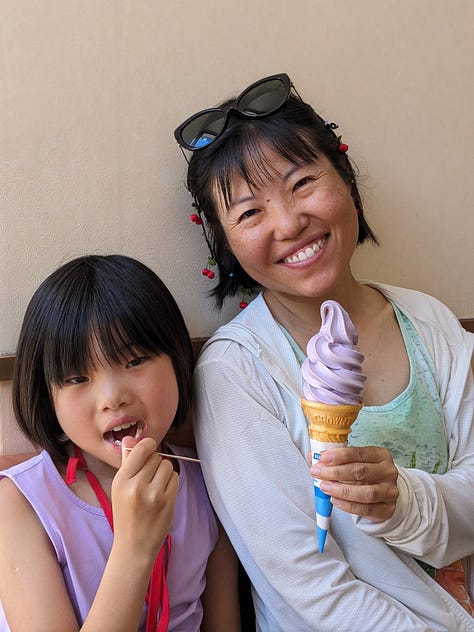
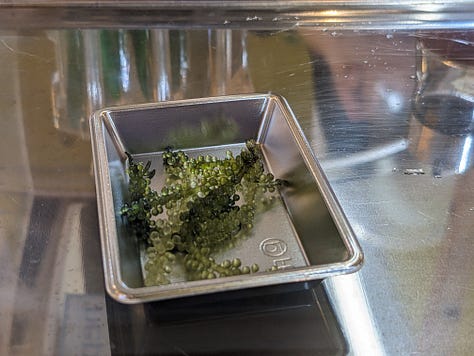
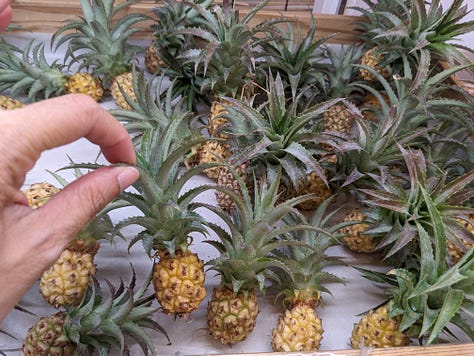
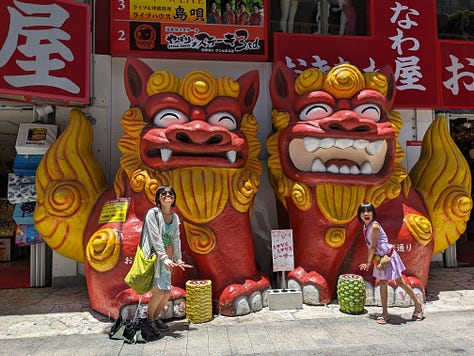
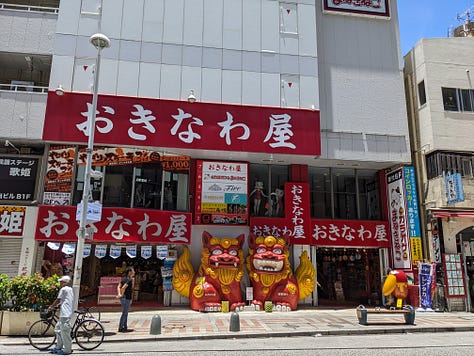
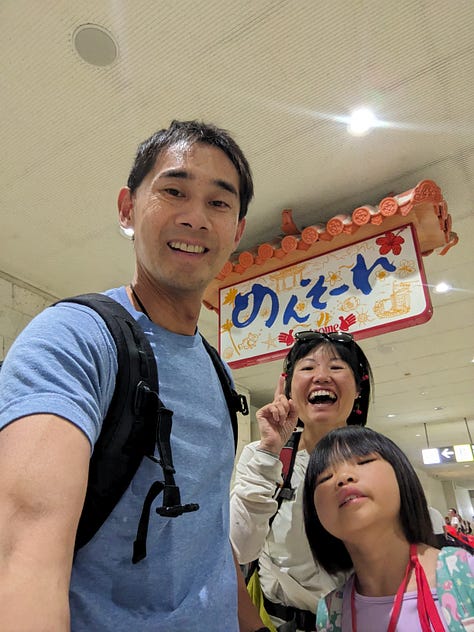
We also find Shisa, the two-lion combination that is their island mascot. It is everywhere, and the right-side lion is always mouth-open and the left one mouth-closed. This lion is so reminiscent of Chinese lion statues, but a lot cuter. We soon find out that Okinawa has heavy Chinese influence because they were an independent nation called Ryukyu that traded with China long before the Japanese took it over.
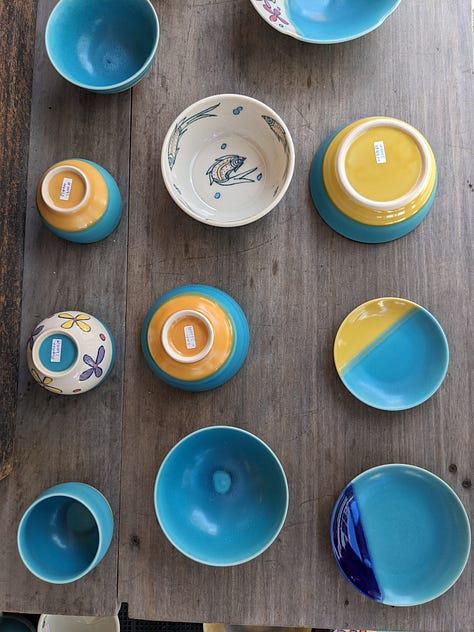
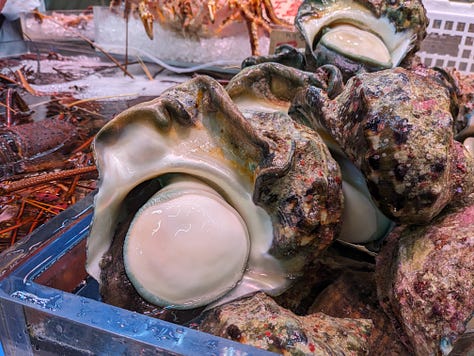
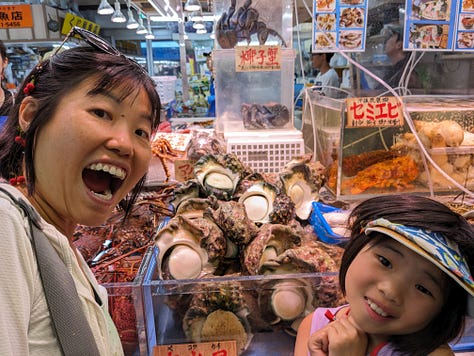
We then visit the pottery street, where very thick cottage-style pottery is on display. Not much to look at, but I love the unique blue they use on the modern pieces. We also visit the seafood market, where we find coconut crabs these very large “scallops” that cost $30 each, and tons of other seafood as well. Upstairs are restaurants that will cook your self-picked fresh seafood. They have Papa Bear’s favorite fish, the fugu or porcupine fish. But Papa Bear likes to watch them swim, not eat them, so we didn’t have the heart to eat anything else still alive in the tanks. After a quick lunch, we head to the museum.
The Okinawa History Museum
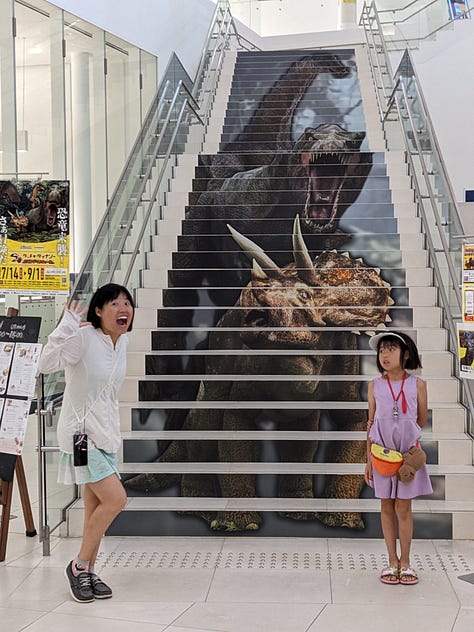
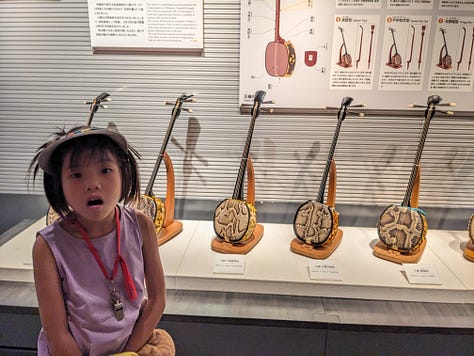
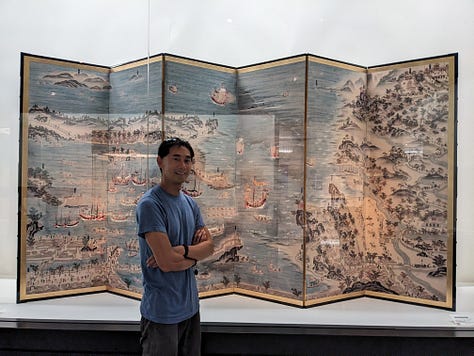
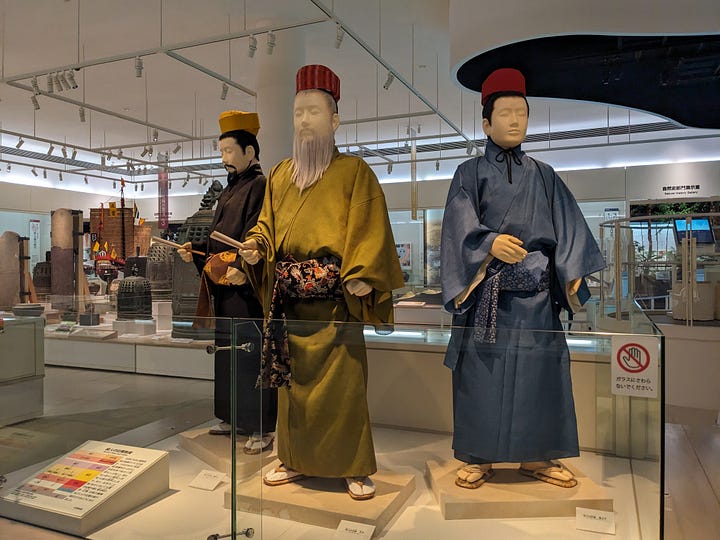
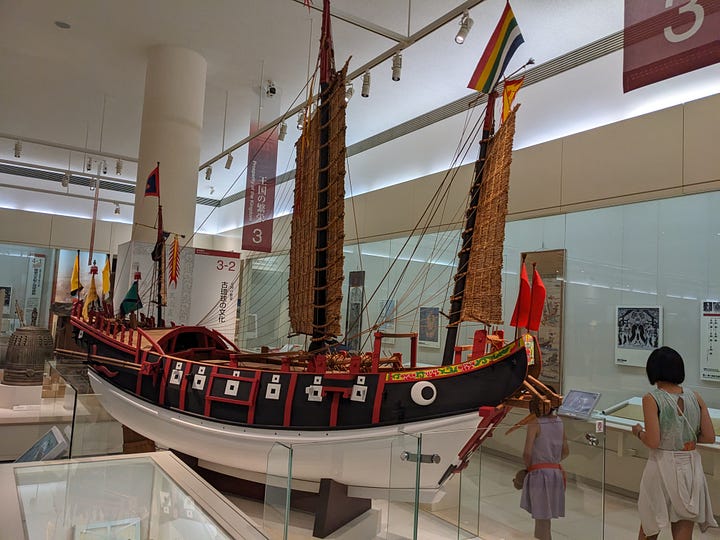
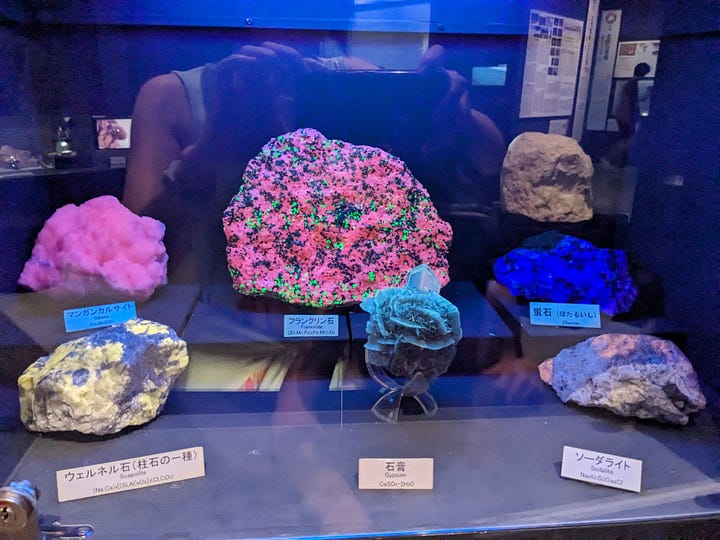
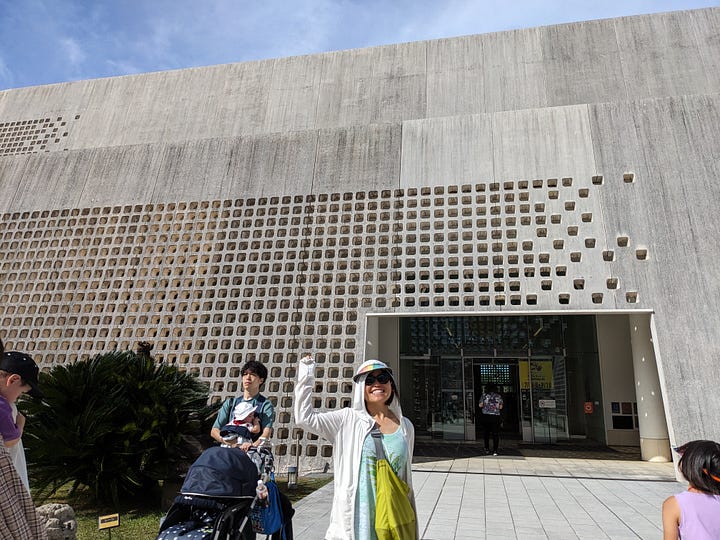
For a cool $3 a person, you can spend an afternoon with their amazing display. It is Sunday and there is a dinosaur display in the seasonal area, so there is a huge line for buying tickets. Luckily their permanent display is empty of people.
They have an incredible display of the natural flora and fauna of Okinawa with about 500 taxidermy animals. There are rocks and geology, and there is also history.
We learn that Okinawa had a turbulent past and is intricately linked with China and Japan's timelines, on display side by side at the museum. The Ryukyu Kingdom (1429-1879) thrived as a prosperous maritime trading state, establishing extensive trade networks across East and Southeast Asia. The kingdom maintained a degree of independence by paying tribute to both China and Japan, which allowed it to serve as a cultural bridge between the two countries.
In 1879, Japan annexed the Ryukyu Kingdom, integrating it as Okinawa Prefecture. During World War II, Okinawa was the site of a brutal battle between Japanese and Allied forces in 1945, leading to massive casualties and devastation. Post-war, the United States administered Okinawa for 30 years until 1972, when it was returned to Japan. Today, Okinawa is known for its unique cultural heritage, distinct from mainland Japan, and remains home to significant U.S. military bases, which continue to influence its economy and politics.
We had such a great time at the museum that we missed the last entry for our next attraction, the Shurijo Castle. So we take in the sunset view at a nearby viewpoint and plan to visit another day.
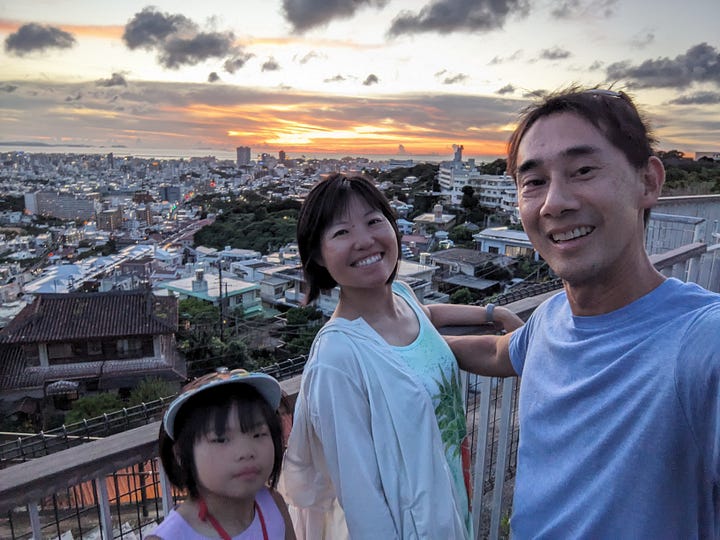
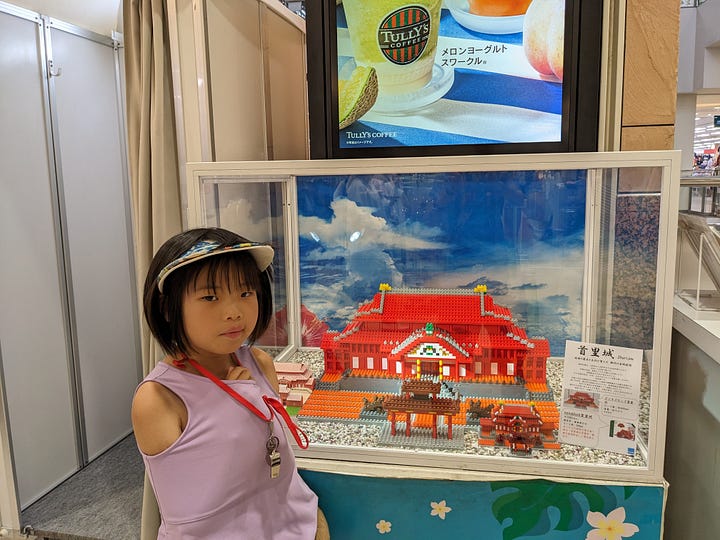
An hour’s drive later, we arrive at our beautiful ocean-side apartment hotel, the Odysis Onna Resort Hotel. This is our favorite hotel! It has the softest bed in Japan, a view of the ocean, a heart-shaped tub, English-speaking front desk staff, spacious living space, and a cafe room downstairs with free drink machines we look forward to playing with.






